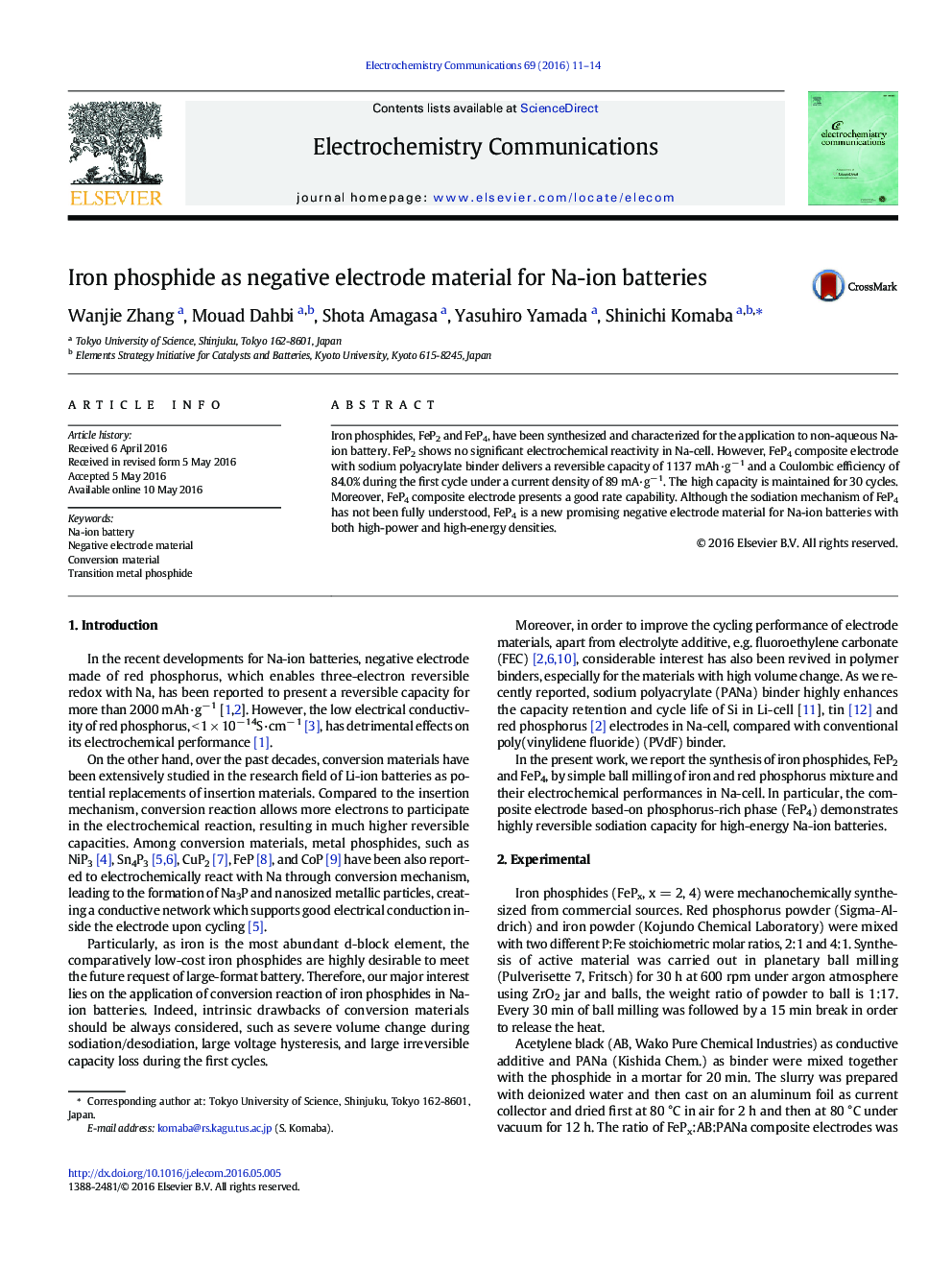| Article ID | Journal | Published Year | Pages | File Type |
|---|---|---|---|---|
| 178651 | Electrochemistry Communications | 2016 | 4 Pages |
•An efficient synthesis method for iron phosphides is confirmed as ball milling;•High reversible capacity (1137mAh g− 1) and Coulombic efficiency (84.0%) of FeP4 are gained during the first cycle in Na cell;•Good capacity retention and enhanced rate capability are achieved for the FeP4-polyacrylate composite electrode.
Iron phosphides, FeP2 and FeP4, have been synthesized and characterized for the application to non-aqueous Na-ion battery. FeP2 shows no significant electrochemical reactivity in Na-cell. However, FeP4 composite electrode with sodium polyacrylate binder delivers a reversible capacity of 1137 mAh·g− 1 and a Coulombic efficiency of 84.0% during the first cycle under a current density of 89 mA·g− 1. The high capacity is maintained for 30 cycles. Moreover, FeP4 composite electrode presents a good rate capability. Although the sodiation mechanism of FeP4 has not been fully understood, FeP4 is a new promising negative electrode material for Na-ion batteries with both high-power and high-energy densities.
